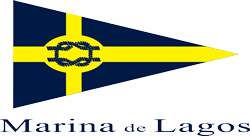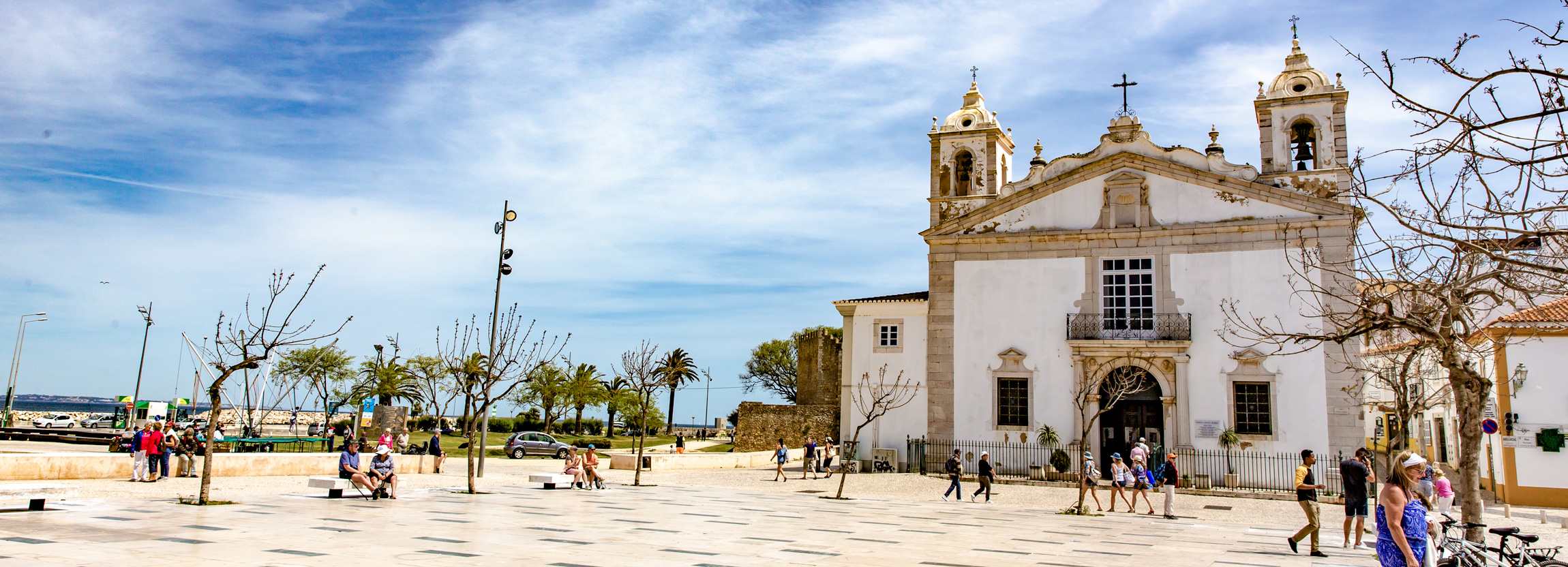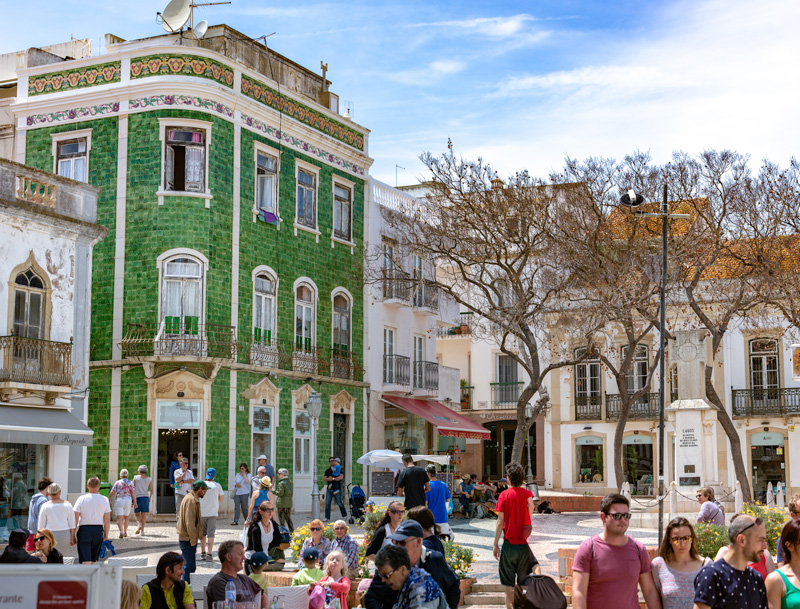Lagos, Algarve, Portugal
The Town
The county of Lagos has an area of 217,6 square kilometres, divided among the parishes of Barão de S. João, Bensafrim, Luz, Odiáxere, and Santa Maria and S. Sebastião, which constitute the city itself.
Lagos is 78 km away from the region’s capital, Faro, and 37 km away from Cape St. Vincent, laying on the coastline of the wide and beautiful bay named after it, along the mouth of the Bensafrim brook. It holds a number of spectacular rock surrounded beaches, shaped by the continual strength of the sea.
The coastline is named the Golden Coast due to the rocks’ yellow colour.
The town of Lagos lays between four hills, dominated by the S. Sebastião church, on the North, and another one presently urbanized, on the South. West and East are bounded by intermediary hills. Of the old military fortress’s walls, nearly the whole land front still survives. Outside the walls, several inhabitants’ gatherings exist, such as S. João Bridge, Porta do Postigo Village (next to St. Amaro cemetery, highest point in town, where the population sought refuge during the 800 earthquake), Porta dos Quartos and the Ribeira, next to the Forte da Bandeira fortress and the tide-gauge, over the pier.
History
Various archaeological stations describe how Lagos has long been inhabited, integrating itself in Algarve’s South Western tip pre-history.
The city’s original name – Lacobriga – points to a Celtic origin, approximately 2000 a.C., being, for a long period of time, a port attended by Phoenicians, Greeks and Carthaginians.
Although the past is documented by various vestiges, Lagos begins to be historically known from 228 a.C., when a treaty between Carthaginians and Romans, setting the Ebro river as the border between the two people. Lacobriga started to prosper and went on until the 7th century, the ancestor of nowadays Lagos.
Lacobriga’s origin is very much unknown, and it appears there were two cities, erected in different locations. The primitive settlement may have been destroyed by an earthquake in the 4th century a.C., leaving no remains. The second Lacobriga was supposedly founded by Bohodes, Carthaginian captain or governor who joined the military units that occupied the Iberian Peninsula by the end of the 4th century a.C.
During the Roman era, Lacobriga became a very important city. In a 18th century manuscript, “Lagos’ Antiques and Churches”, The two Lacobrigas are said to be about half a league apart (1,5 miles). From 713, when the Arabs have already taken over the entire Iberian Peninsula, no more references to Lacobriga are found.
According to more recent history, Lagos was definitely conquered to the Moors in 1249, by D. Paio Peres Correia, and receives its first privilege in 1266, given by the king, D. Afonso III.
Despite all this, it was in D. Afonso IV’s kingdom, with the re-building of the fortress walls and the hosting of the military government of the Algarve, that Lagos’ position was confirmed.
Lagos becomes a county with its own jurisdiction during the reign of D. Pedro I, on January the 5th, 1361. Until then it was under the command of the Bishop of Silves, to whom the town had been donated by the king of Castela.
During D. João I’s reign, the town becomes extremely important, as a base for the Portuguese Discoveries.
Prince Henry lived in Lagos, at the castle and then at the Governor’s Palace, destroyed by the 1755 earthquake. Lagos was, indeed, the base for the maritime endeavours, boat’s construction and armament port, and the set off port for almost every caravel that set out for the Discoveries.
The town men Lourenço Gomes and António Gago set from Lagos and discovered the island of Madeira in 1419. In 1434, Gil Eanes left from Lagos to round the Bojador Cape, during the reign of D. Duarte.
From then on, Lagos became an essential port of call for almost every ship.
The 15th century is the golden one for Lagos. Due to its location facing Africa, during 40 years it is the departing and arrival port of the vessels that, year after year, where discovering the African coastline. As the centre of commerce of exotic merchandise, ivory, gold and silver brought from Africa, new churches and houses are built, more traders and national and foreign bankers settle in town.
Lagos is promoted to a city on January the 27th, 1573, by the hand of king D. Sebastião, who was impressed with the hearty welcome he had.
The diocese’s headquarters are transferred to Lagos, which becomes the capital of the entire Algarve, housing General Captains and Governors of the kingdom.
The 1755 earthquake and its consequent seaquake destroyed great part of the town that, only from the middle of the 19th century started to recover its prosperity, based on fish preserves and commerce.
Patrimony
Lagos has been, since unmemorable times, a history and natural beauty plentiful town, well kept, with pedestrian areas, parks and small niches, full of life and colour, inviting to be discovered.
Following this context, we must refer the guardians of history and art in Lagos, with the church of Saint António and the Museum of Discoveries as the most important examples.
Besides them, we should point out the Ethnographic, Archaeology, Numismatics and Sacred Art museums.
Other musts in Lagos are the statues of Gil Eanes, the discoverer, Prince Henry and King Sebastião, as well as the battle of Alcácer Quibir triptych, which you should not miss.





